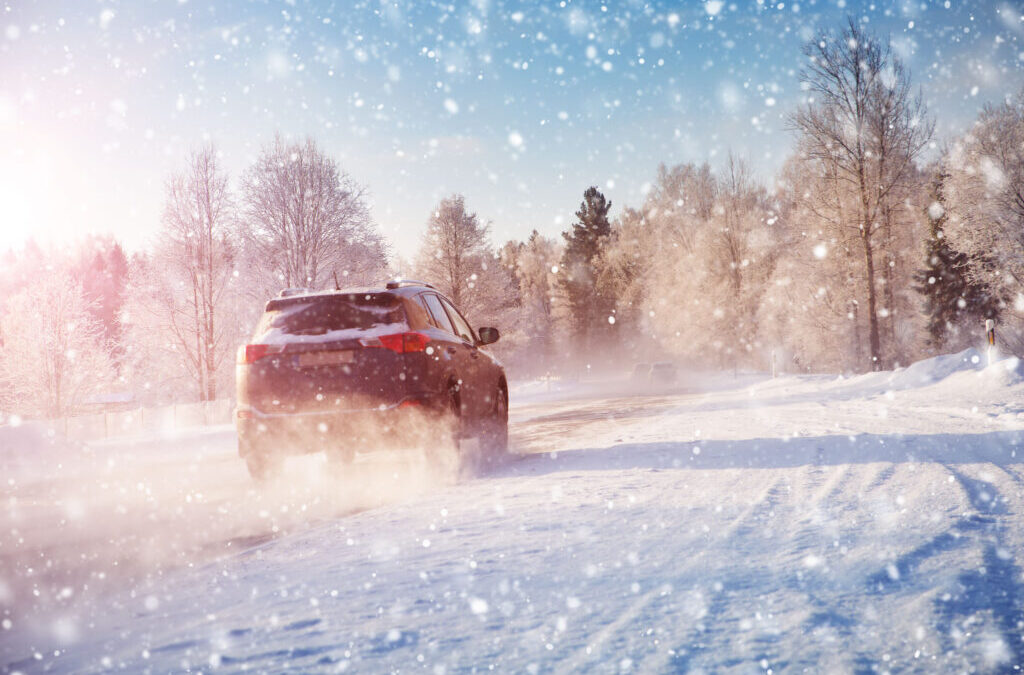
Many Coloradoans are eager for the beauty winter brings to our state and excited to get up to the mountains for winter sports. Nothing ruins a great day on the slopes, a visit to family or friends for the holidays, or even a mundane trip like bad roads or car trouble. As winter approaches it’s important to take the time to prepare your car, and yourself, for the changing conditions. In this article we share expert winter driving tips for how to do both. We at Masterdrive know that sometimes these things can be forgotten, especially when life gets hectic, but spending a little time preparing will pay off down the road.
Winterize Your Car
Before the snow even starts to fall it’s important to do some small tasks to make sure your vehicle is winter-ready. We recommend setting an annual calendar event for your winter driving preparation on your phone as a way to help make it a habit. In Colorado, we typically get our first snowfall in late October. Even if you get a few months into the season, it’s not too late to take care of any of these tasks you missed.Maintenance Tasks
Make sure your routine maintenance is up to date. This includes oil and filter changes and fluid level checks, especially the antifreeze. While your car is with your mechanic, make sure they check your battery and replace it if necessary. Replace your windshield wipers with winter-grade wipers. This may seem like a small thing, but it can have a big impact on safety. The right wipers ensure that you have good visibility even in harsh winter driving conditions. For a list and reviews of the top ten winter blades, check out this great article by AutoGuide.com. Invest in winter washer fluid. When temperatures drop your standard washer fluid is likely to freeze. It’s important to swap out for a specialty fluid during those cold winter months. You can purchase a replacement fluid, an additive to your existing fluid (either liquid or tablets), or a concentrate. Your local auto parts associate should be able to help you choose the best option for your vehicle. Get snow tires and check your tire pressures. Winter tires are made with rubber that’s softer and more pliable. This helps get better traction on ice and snow. More traction means the driver has better control of the vehicle. If you’re not able to put snow tires on your car, your next best bet is to ensure your tires are properly inflated. For every 10 degrees that the temperature drops, tires can lose 1-2 pounds of air pressure. Check the vehicle manufacturer’s recommended tire pressure on the door placard and keep an eye on the tire pressure during the colder months. Many tire stores offer complimentary air checks and will top off your tires with air for free. Take the time to practice or brush up on common winter tasks. Standing in a blizzard is not the ideal time to try to put chains on for the first time. Take a few minutes to brush up on things like how to use jumper cables, change a tire, and put on snow chains before the winter driving season begins. Cold fingers and poor conditions can make these things even more challenging! The right preparation can save you a lot of time, discomfort, and frustration.
Make Your Winter Driving Emergency Kit
Make sure you have an emergency kit in your vehicle. You never know what may happen when you are out on the road, but inclement weather certainly increases your risks. You are more likely to get stuck, snowed in, or stranded. It’s important to put supplies in your trunk so you are able to get back on the road safely and quickly. If you aren’t able to get back on the road you need to be prepared to stay safe while you wait for help. We suggest the following items for your emergency kit:- A flashlight and extra batteries or a crank flashlight
- A small snow shovel and an ice scraper
- Extra gloves, winter hat, and a blanket
- Hand and boot warmer packets (we like the HeatMax brand)
- Bottled water
- A first aid kit (this should be in your car year-round)
- Jumper cables and a tow strap, especially if you have an older car


